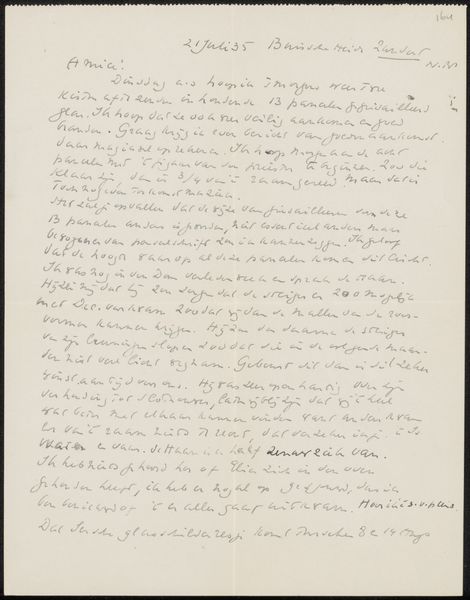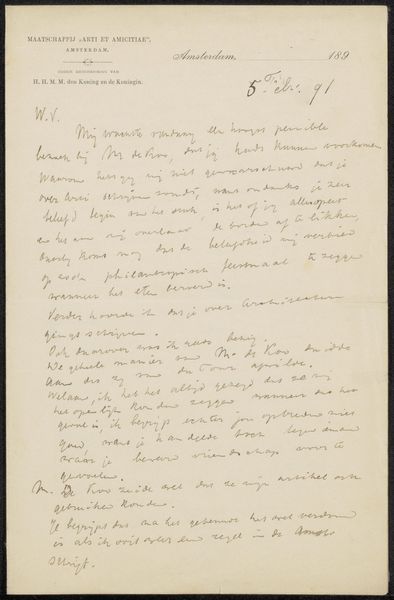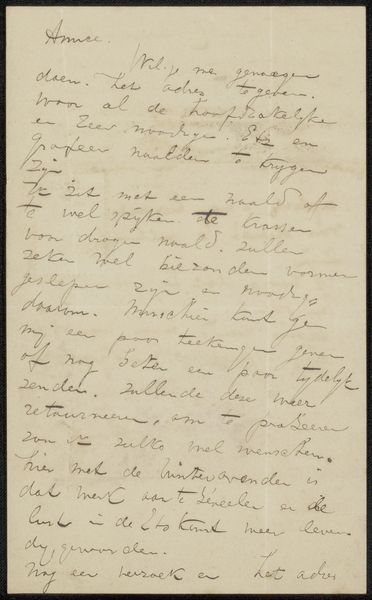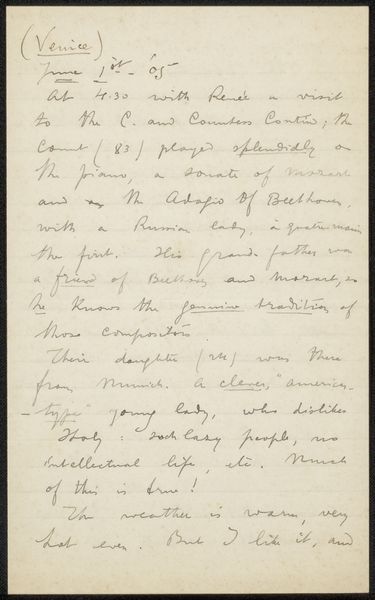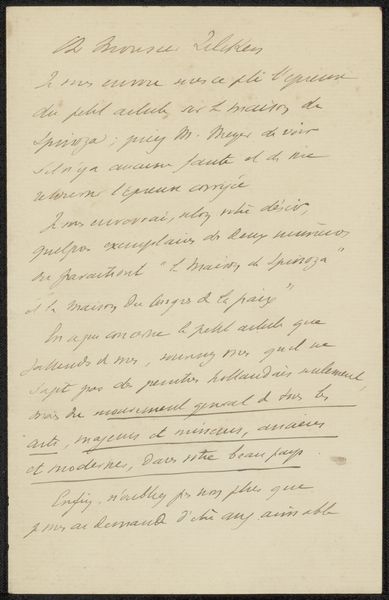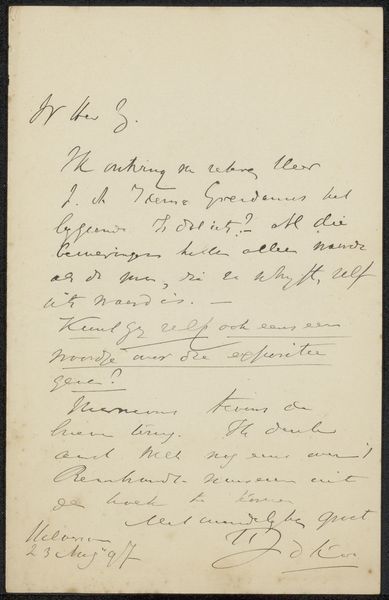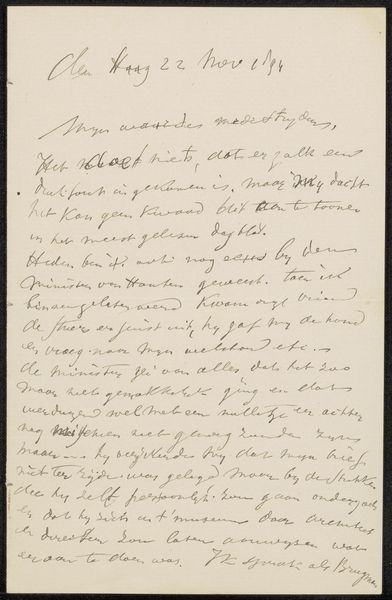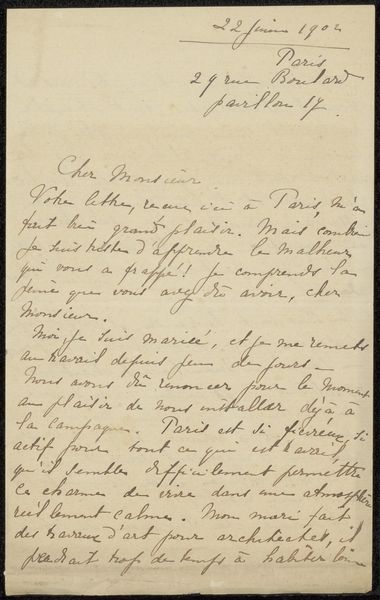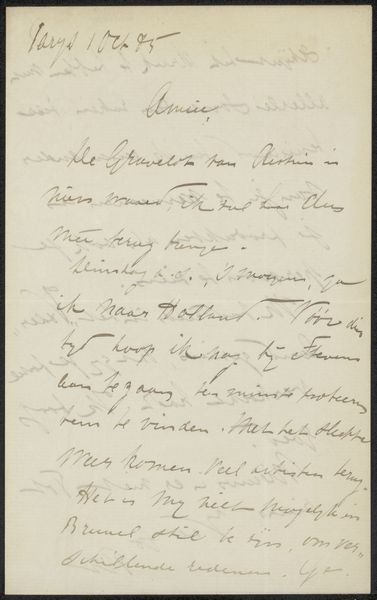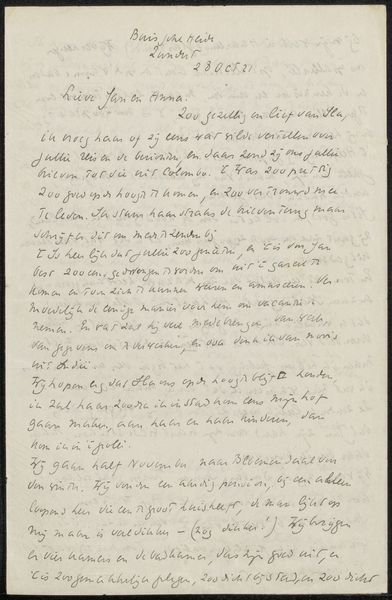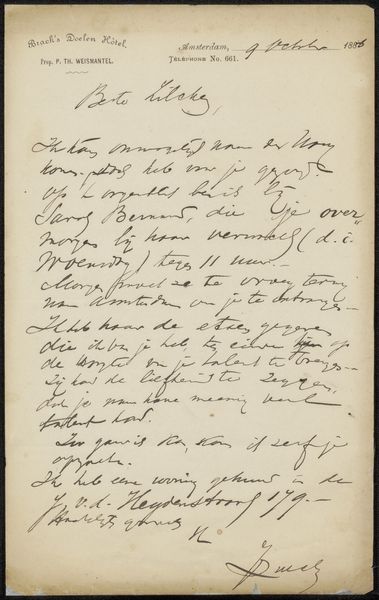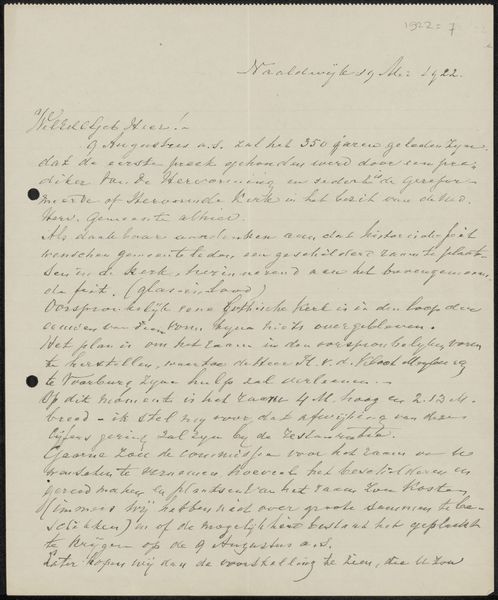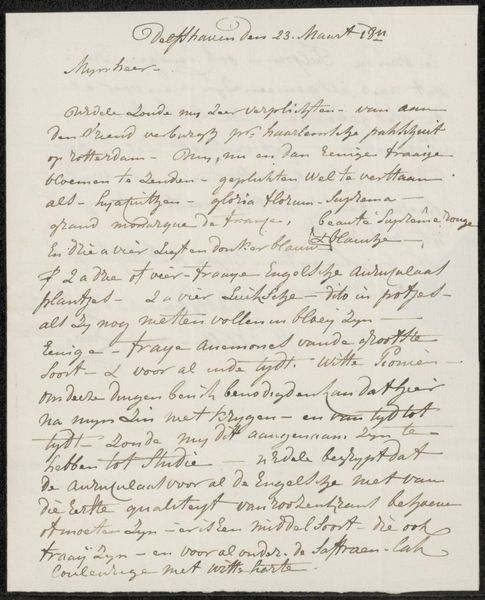
drawing, paper, ink, pen
#
drawing
#
ink paper printed
#
old engraving style
#
hand drawn type
#
paper
#
personal sketchbook
#
ink
#
ink drawing experimentation
#
pen-ink sketch
#
ink colored
#
pen work
#
sketchbook drawing
#
pen
#
sketchbook art
Copyright: Rijks Museum: Open Domain
Curator: What strikes me immediately is the artist’s hand evident in every stroke—you can feel the intimacy of the moment he put pen to paper. Editor: Absolutely. We’re looking at "Brief aan Pieter Haverkorn van Rijsewijk," a pen and ink drawing on paper, likely created around 1899 by Carel Lodewijk Dake. It’s currently held at the Rijksmuseum. Curator: Dake situates himself here as more than just a painter; the letter presents him as a person actively navigating the social and artistic landscape. What does a letter from Dake to a Rijksmuseum employee during the Hague School period tell us about the societal dynamics of artistic life at the time? Editor: Indeed. Think about the material constraints: paper, ink, pen—the accessibility of these tools meant artistic expression wasn’t confined to the elite or the studio. He could correspond directly with gatekeepers like Rijsewijk. How does the simple materiality enable a dialogue and a relationship that’s key to Dake’s professional pursuits? Curator: There is something so modern here! The handwritten script and sketched layout are fascinating and create a more personal effect that goes far beyond professional. It's a direct bridge to the artist’s thought process. It makes the piece quite powerful. Editor: Definitely. The physicality of handwriting connects the artistic act with a more labor-intensive creation method that’s not readily appreciated in our digitized communication world. Curator: By seeing that labour, it allows us to question not just what art means but what kind of art receives recognition within institutions like the Rijksmuseum. Editor: I appreciate how this intimate exchange, rendered in simple materials, invites us to consider the networks and effort underlying even the most celebrated works of art. Curator: And for me, understanding this piece is about situating the artist within that matrix, the labour it took to be seen and, for this artist, the intersection of a professional and social ecosystem that is just outside the realm of painting but deeply tied to it. Editor: Precisely, revealing how deeply enmeshed artistic creation is with tangible means and social contexts.
Comments
No comments
Be the first to comment and join the conversation on the ultimate creative platform.
